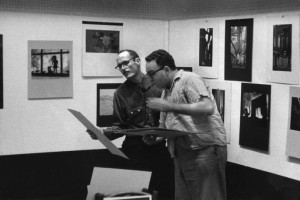How wide is wide enough? Flirtations with the Widelux

After 67 years of photographing, remembering the cameras I’ve used is a bit like reminiscing about relationships. Some turn out to be real love affairs, others are flings, but no matter what, they are all old friends at this point — I’m happy to say. In the past year, I’ve written a couple of other blogs about cameras, such as my adventures with the Olympus half-frame and my very early days of shooting with a Rollieflex. Now it’s the Widelux.
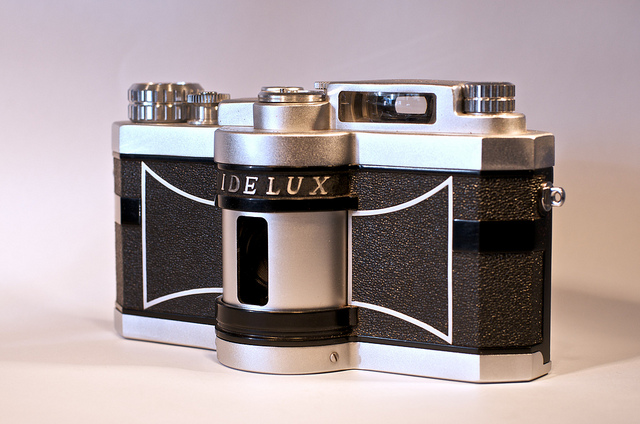
My mother always said: “Enough is enough!”, but I always wanted more. As a street photographer, my favorite lens was a 35mm semi-wide angle lens. The wider angle offers the photographer the opportunity to come in close and still have some of the background appear in the view-finder. My interest in the Widelux camera began in the 70’s when I was looking for more width. There were two other swing lens panoramic cameras on the market at the time — the Noblex and the Horizon, but Widelux was the most affordable so that’s what I bought. I owned the Widelux F6, which was manufactured beginning in 1970 and came with a 26mm lens. The pivoting of the lens combined with the wide angle of the 26mm is what produced the extra width in the photograph. In fact, the lens covered such a wide area that if you held it by your hands, your fingers would appear as part of the photograph! To solve that I used a tripod socket to hold it with a handle so that my fingers wouldn’t interfere.
The great width and depth of field allow for some possibilities that you just can’t get from a traditional 35mm SLR camera. For example, in the photo above, you get to see the two worlds of light and dark, which converge in subway stairwells. On the one hand, people are descending into the dark world of the subway while others are moving up toward the light. The Widelux allowed me to capture both with a good depth of field.
Because the width of the Widelux sacrificed height it was especially handy when most of the information you want to share comes within the narrow and wide horizontal frame, like these three photos below.

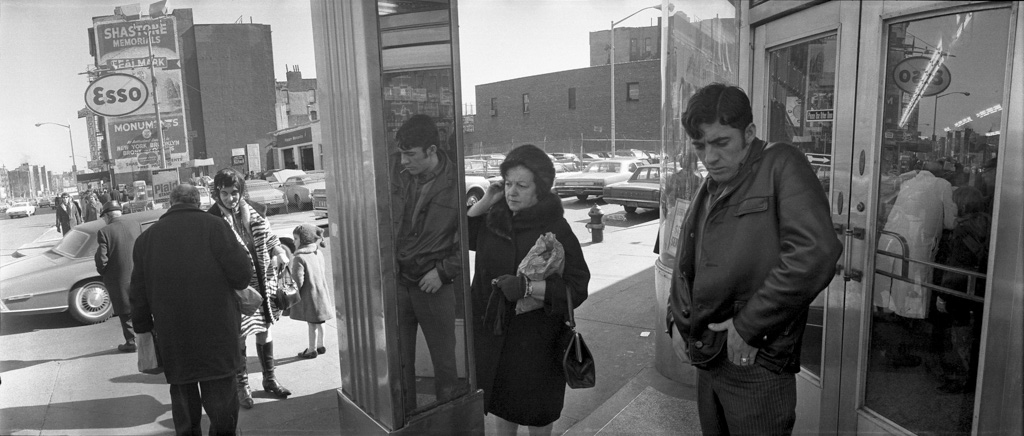
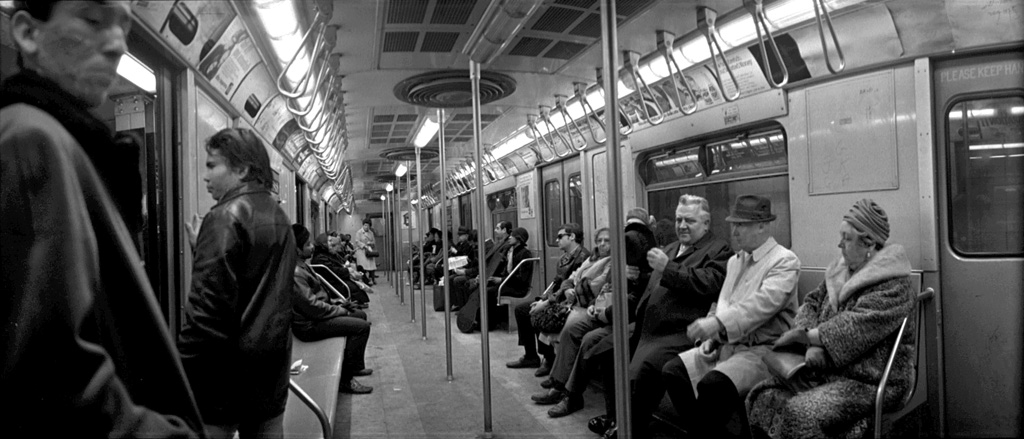
This accentuation of the width vs. height meant that most people use the camera with a horizontal orientation. But, I also loved the results of vertical shooting. In the photo below (left), the girl lying at my feet with the reflector, her two friends posing and the distant ocean horizon are all available with great depth of field — something not possible with other cameras. So too, the tall, veritcal format captures these footsteps in the sand (right) as they wander off into a foggy horizon in a way that couldn’t be done within a horizontal photo — with the extra length narrowing attention on the footsteps as they disappear.
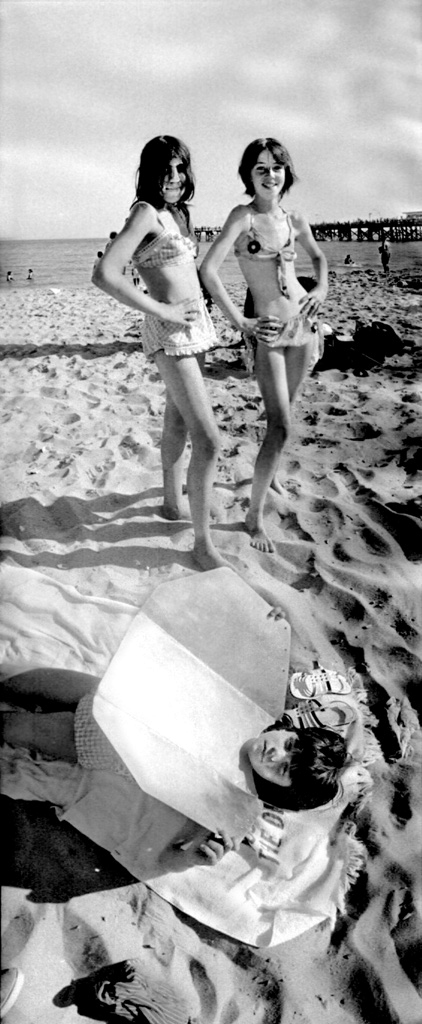
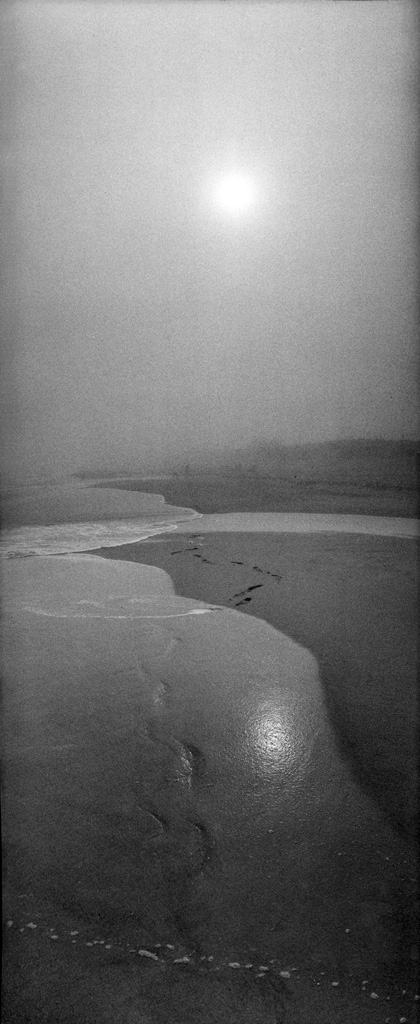
I used the Widelux on and off for about five years, making it a short, but sweet relationship. For me, it turned out that its assets were also its liabilities. I found that viewers sometimes got delightfully caught up in the distortions of the photograph caused by the extra wide angle, and over time I felt this detracted from what I wanted to show.
However, there were a few where the distortions actually speak to my Coney Island heart.
Here, the Widelux captures the complete curvature of the carousel creating a kind of tipsy sensation, which seems to speak of the fun of the place.
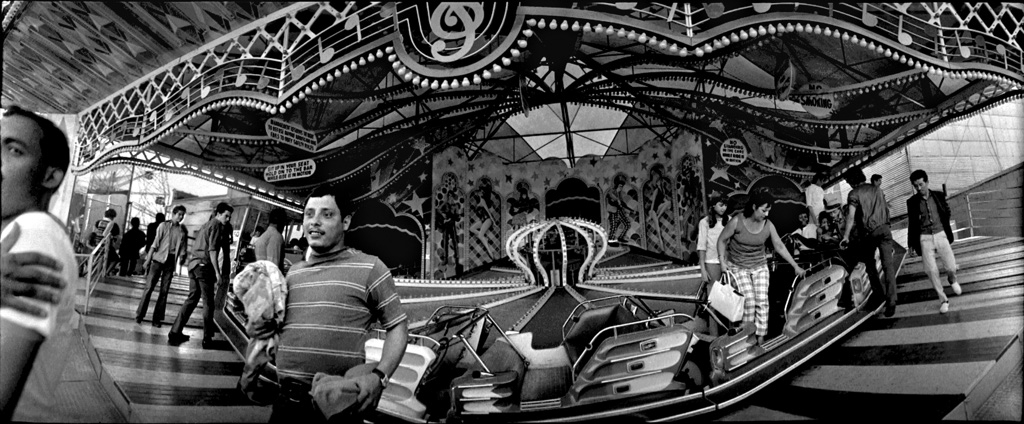
In this photograph the curved horizon on the sides of the photo seem to suggest that these children are celebrating at the top of a small planet! I always said that Coney Island is the center of the universe, and this photo proves it!

you are constantly amazing me….
charles
I love these retrospective stories of your use of different equipment and techniques – thank you. One of the joys of photography to me is the experimentation and the intrigue it provides whether the result is a “failure” or a success, clearly the latter here with this image – one of my favorites of yours.
Harold, these photographs and reminiscences are such fun – thank you!
I love these photos – had never seen them before.
Thank you so much for writing – it is wonderful to hear from your current perspective!
Bless you.
I am a recent convert to panorama and found a Widelux F7 that works great. As a recovering perfectionist, the sheer unpredictability of the Widelux is having a positive impact on my photography.
Thank you, Harold Feinstein for this post! I am the proud owner of one of your prints as well as your book.
Have always used an SLR I am intrigued by the Widelux.
Need more information and your photos are amazing.
